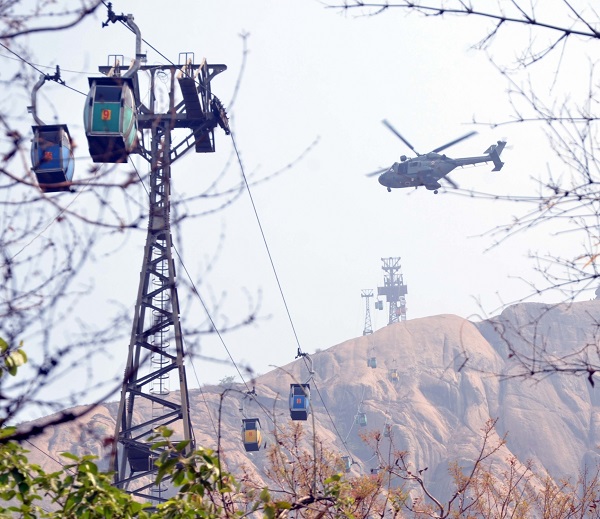
Kolkata, (Asian independent) “A very successful operation that highlights the capabilities of our security forces”, is how Air Chief Marshal Fali Homi Major, former Chief of Air Staff, Indian Air Force (IAF), chose to describe the rescue of 46 of 48 people trapped inside cable cars at Trikut Hills in Deoghar, Jharkhand, for nearly 48 hours since Sunday afternoon.
Air Chief Marshal Major is “special”. Not only was he the only officer from the helicopter wing of the IAF to head the Force, but also he participated in a similar rescue operation in Himachal Pradesh 30 years ago as a Group Captain.
ACM Major then captained a Mi-17 helicopter as para commando Col (then Major) Ivan Joseph Crasto (retd) and his men pulled out 10 people from a stranded cable car dangling 3,000 feet from the ground at Parwanoo. This operation came to be known as Op Timber Trail Rescue.
“Such operations are extremely tricky and delicate due to the multitude of cables that have to be avoided. You have to be extremely careful when the winch ia lowered. This requires a lot of skill, a lot of patience and a lot of planning. It is a combined operation between the crew of the helicopter and the commando who is operating down below. It is a big challenge to hold the aircraft as steady as possible despite strong winds. There is need for total co-ordination and our teams of rescuers have achieved that in Jharkhand,” ACM Major said.
He was disappointed at news reports claiming that a life was lost due to ‘botched’ operations. “Such operations are risky and mishaps can happen. It isn’t easy to winch up a person in conditions such as these. I certainly feel that this was a great effort by our security forces,” he added.
The IAF announced on Tuesday evening that the operation at Trikut Hills that lasted 26 hours has been completed. The rescue operation involved the use of two Mi-17V5, a Mi-17, an ALH and a Chetak helicopter.
Five Garud Commandos of the IAF carried out rescue operations from the cable cars even as pilots, with no briefing about wind speeds or other weather conditions, struggled to hold their aircraft steady. The IAF also expressed grief at the loss of two lives despite best efforts.







